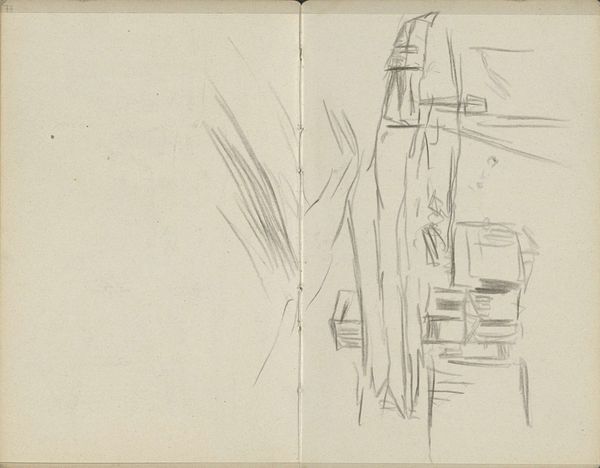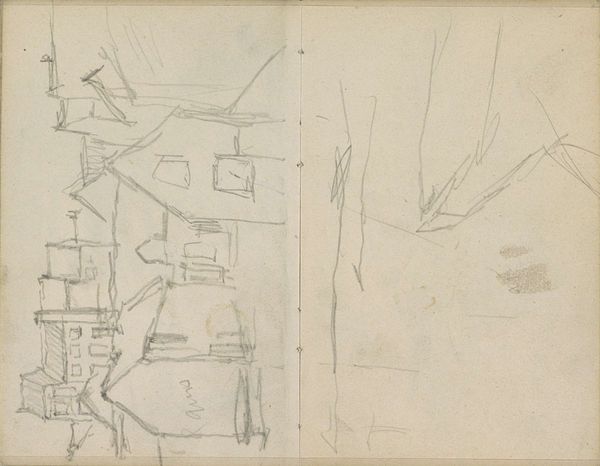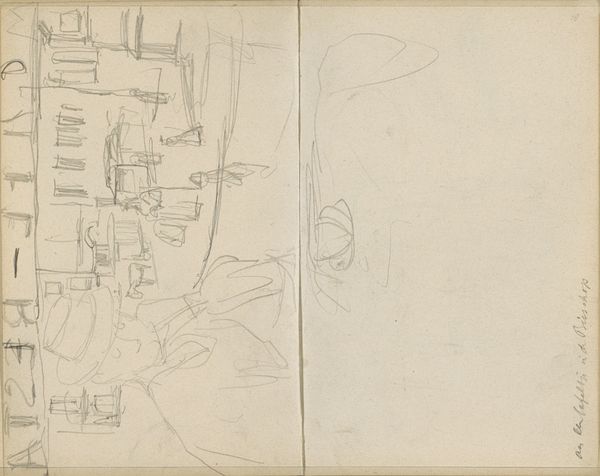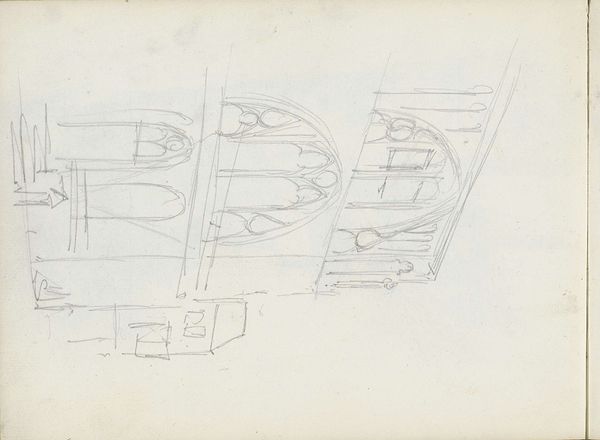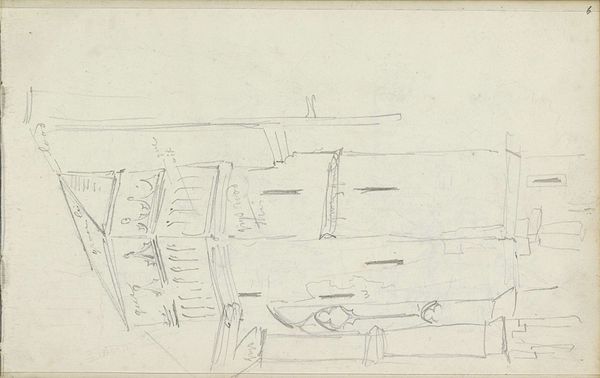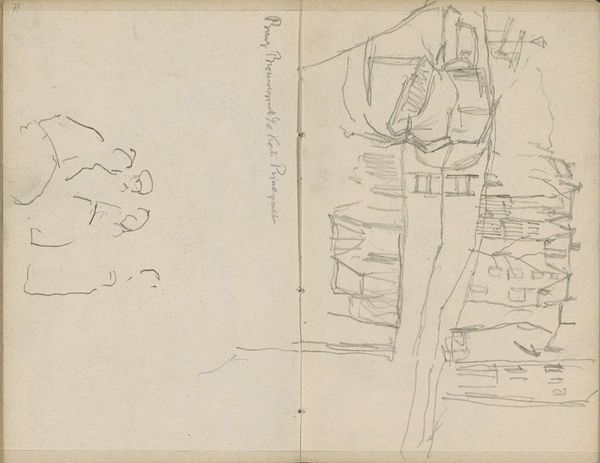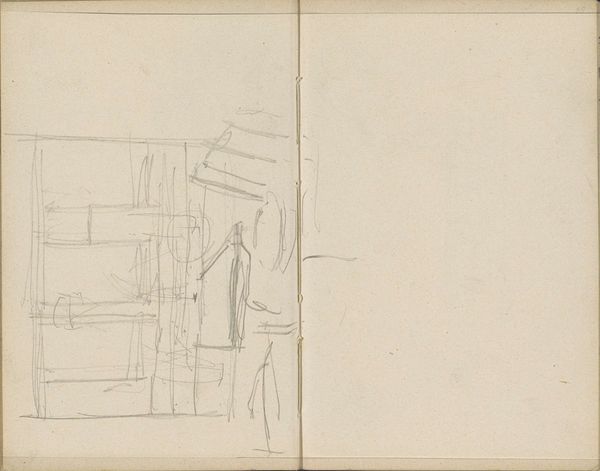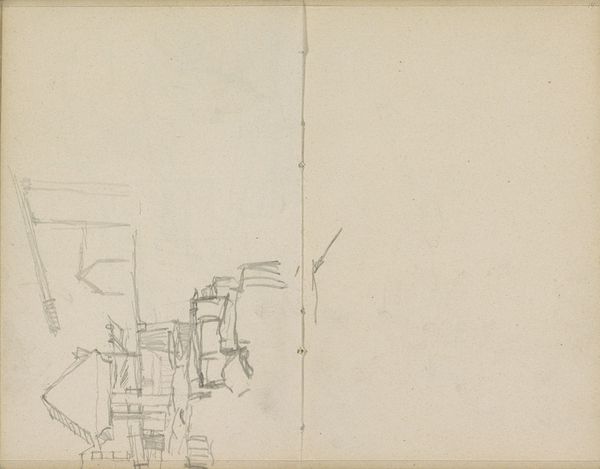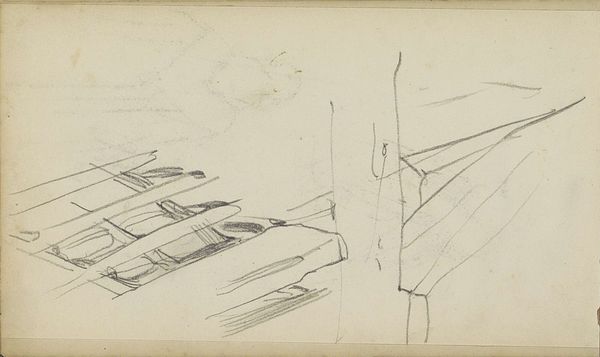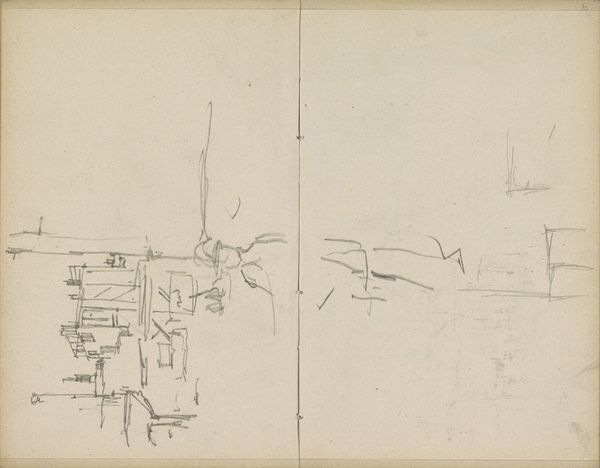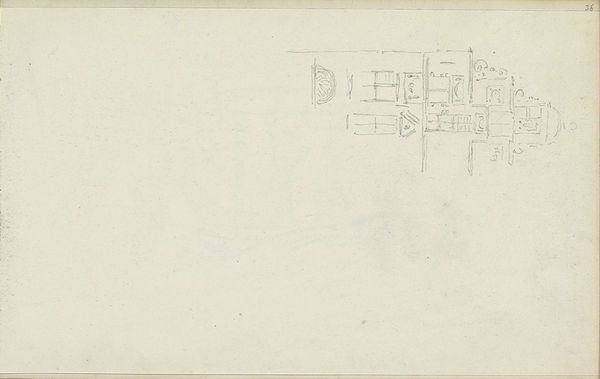
Gezicht op de Sloterdijkbrug te Amsterdam Possibly 1907 - 1911
0:00
0:00
drawing, pencil
#
drawing
#
pencil
#
cityscape
#
realism
Copyright: Rijks Museum: Open Domain
Curator: Breitner's sketch of the Sloterdijkbrug in Amsterdam, probably dating from somewhere between 1907 and 1911, offers a fascinating glimpse into his working process. What jumps out at you? Editor: It's haunting, isn't it? That stark, almost skeletal quality... It feels like a ghost of a place. There’s this big emptiness that dwarfs the bridge structure itself. And look, the book is open and nearly empty too: a conversation between something that already exists (bridge) and something about to come (Breitner's intervention). Curator: Precisely. Breitner, a staunch advocate for capturing the immediacy of urban life, employed sketching as a vital tool. Note the directness in his style—minimal embellishment, just raw observation. He was deeply embedded in Amsterdam's visual culture, especially known for portraying ordinary folks in this time. Editor: So he saw the city as a landscape to document. It’s like he’s asking us to pause and look closely at the ordinary structures that shape our lives, literally a bridge between neighborhoods, the human and the engineered. And maybe even questioning how those things become entwined. Is that what it feels to document his everyday reality? Curator: He was interested in this precise idea. Remember, the Rijksmuseum's holdings reveal just how committed Breitner was to realism, and his choice of such everyday subject matter placed him amongst the artistic avant-garde. And remember, photography at this time starts playing a major role for representing "reality" for artistic reference. Editor: It’s funny, you mention the realism; to me it feels like a starting point—a springboard. Breitner’s left so much space for interpretation. It feels almost…abstract in its incompleteness. In leaving out all that information, all that “realism”, that gives space for my emotion to fill in the blanks. It goes both ways, you know? Curator: It's like he deliberately provokes a response by holding back. His style was influential amongst younger generations. But look at those almost architectural lines! These works ended up framing perceptions of Dutch urban environments and society at the turn of the century. Editor: He provides enough clues to begin that engagement. Looking closer it is a potent reflection of his society. Breitner prompts us to consider the poetics of urban space through very little information. It shows the artist as part seer, part social commentator. What can we make of that relationship? Curator: That's it exactly! A testament to the power of suggestion. Editor: Absolutely.
Comments
No comments
Be the first to comment and join the conversation on the ultimate creative platform.
